#I was doodling some concept like La la la and went to change brushes and noticed they were all gone and just about died LOL
Text
I AM GOING TO LOSE IT
my computer updated while I was asleep and sai was open so it fucked it up ???? and now the brushes I made to study with yesterday are gone. Just fucking gone. I made 4 of them and I was so happy and now they're just poof.
I can't handle this - I was literally just slightly getting over losing my whole previous kit and now RIP AGAIN. what is happening ; ~ ;
#I was doodling some concept like La la la and went to change brushes and noticed they were all gone and just about died LOL#it has been a time for me guys idk what to do and why this keeps happening. I would move to CSP but it's so much and im old and i just love#sais simplicity
11 notes
·
View notes
Text
Scoob! Review
Apologies: I watched the movie two weeks ago, but forgot to write this because I was so busy doing the Dragonball FighterZ thing. But, with that out of the way...
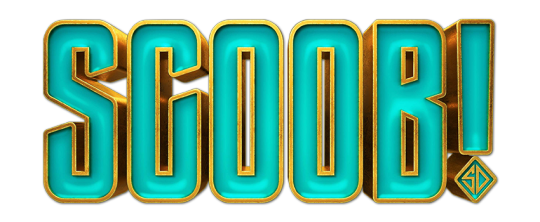
An interesting ride. As a longtime Scooby Doo fan, it was pretty much a given that I would watch this installment by the Warner Animation Group as soon as possible, and I had a pretty good time - albeit with some issue. It’s a fun Scooby adventure, mostly focusing on Scooby and Shaggy, as they go on a new kind of adventure. It’s full of fun references, super charmingly animated action scenes, and lots of humor that actually nails the characters’ goofball antics without diminishing them as the butt of the joke - which is something the previous theatrical series was hit or miss about - which which is also hampered by the fact that it doesn’t really give itself enough time or space to really make any of those things shine.
Spoilers, but only a couple.
The first thing we ever heard about this movie years ago was that it was conceived as a dramatic retool of Scooby Doo into a out-and-out spy series, in order to set up a Hanna Barbera cinematic universe a la the MCU (which, given that they already had a shared universe they could adapt in Future Quest, hit a little hard), giving the impression that Scooby was going to be a pastiche of James Bond. It’s very obvious from the finished product that this concept was since heavily changed, but you still see it in the film. The gang is still the same-old gang - a bunch of kooky teen mystery solvers - but plotwise it’s very much “what if instead of solving a mystery, the gang just fought a supervillain?” Which, let’s be clear, is not unheard of for the franchise: see Scooby Doo and the Cyber Chase for another story that’s mostly just “fight a cool bad guy, with a tacked on mystery,” or the other Shaggy and Scooby-centric stuff like Ghoul School or Reluctant Werewolf for other movies that just plain eschew their usual setting entirely - this is a lot like those. It’s centered around the two characters’ relationship, like pretty much every theatrical Scooby release it seems, as this new challenge almost breaks their union, and the group as usual does very well in that kind of action. Faced with an army of dimwitted robots that can go from silly to terrifying multiple times in the same scene, Scoob and Shag’s typical mix of silly bumbling with surprisingly - and destructively - clever antics make for some great scenes, my favorite being a madcap chase through an amusement park that ends with them getting away on a ferris wheel that’s been knocked of its hinges.
This is very much a movie that wants to be a Hanna Barbera crossover, but is trying hard to restrain itself. As a kid Shaggy was a fan of the Impossibles (who, iirc, were once intended to get a movie as part of this universe) with models and posters that the camera never completely focuses on, you see Laff-a-Lympics on an arcade machine, references to classic Scooby writers and actors as location names (I laughed at Messick Mountain, and the Takamoto Bowl outright went over my head at first), even little things like Scooby bowling like Fred Flintstone or the blink and you’ll miss it appearance of Yankee Doodle Pigeon - and yes, Captain Caveman shows up, fully voiced by Tracy Morgan and kicking butt for a very short scene, with one of his show’s supporting characters (Dee Dee Skyes) as a prominent in this movie’s plot. There’s even musical references in addition to visible ones: at one point, the movie even orchestrates one of the classic bits of Scooby Doo background music. I was hoping for a reference to the classic Scooby Doo / Blue Falcon theme, but alas that was one nod we didn’t get.
However, this approach does work especially well with Blue Falcon - who was originally built up through Scooby Doo, sharing a timeslot, advertisement and technically a theme song, and in time has more or less become to Scooby Doo what Donkey Kong is to Mario: technically a supporting character, but able to do his own stuff every once in a while. There have been several Blue Falcon Scooby Doo crossovers in the last few years (though in terms of sheer number of references this movie’s got nothing on Mask of the Blue Falcon), and they’ve all been very fun as each show, movie or comic reinterpreted the character to fit their specific world - and this movie’s novice Blue Falcon who is kind of an egoistical loser, but turns out to have a lot to learn even from Scooby and Shaggy’s brand of cowardly bravery, grows on you even if he has kind of a rough initial landing.
Unfortunately, this is also a movie that very much wants that rigid hour and a half timeslot, and has absolutely no interest in a going a second longer - and that’s where it’s problems come in. I’ve said before that animated films have become more and more written with expediency in mind: plot points are rushed, denouements are minimized, side or even main characters might not get much utilization, and sometimes things come of as just kind of happening to the protagonists without much set-up. Even the best or the best animation companies fall into these traps at times, and this movie is a good example of what it looks like if you fall into that too much.
Take the Scooby gang - Velma, Daphne, and Fred. They’re not really fleshed out that much in this movie, even if they were tweaked a bit with their new VAs - but that’s not necessarily a problem in itself, given the heavy focus on Scooby and Shaggy. What’s more noticeable is where this intersects the plot: for example - one of the better examples of what I’m talking about - the scene that kicks off the whole story. Fred, Velma and Daphne want to expand Mystery Inc, and call Simon Cowell to invest in them. Cowell decides Scooby and Shaggy are incompetent because reasons, and the two storm off. This is later framed as the gang abandoning the duo, that’s not really what happens. Once Cowell hits the scene, beyond one or two lines the rest of the gang essentially ceases to exist, and barely reacts to anything: there’s no moments with them where they seem to buy into what Cowell is saying, there’s nothing beforehand that implies that they’re dissatisfied with Scooby and Shaggy, there’s isn’t even really a status quo for what their dynamic is like. We cut straight from them meeting as kids to them having a supposed fight as adults - this is something that wouldn’t have taken a lot of time, but would have strengthened pretty much everything, from Scooby and Shaggy’s reaction to the trio’s guilt later, but is skipped over entirely. The others get very little beyond being summed up as “the muscle” (Fred), “the face” (Daphne) and “the brains” (Velma), and it feels less like expediency and more like we missed a scene somewhere.
Granted, this particular thing also runs a unique problem that the Scooby gang face. As characters who just turned fifty and who are well entrenched in pop culture, adaptations often assume you know who they already - and this movie definitely assumes you can do its work for it and establish a baseline for the Scooby gang on your own... and on that front, I suppose it does better than the previous film series, which based a lot of its humor on fandom in-jokes they poorly assumed everyone agreed with. But... there’s a degree to which every film needs to establish a baseline for that it itself to trying to do, and I think skipping this hurt the film more than it should have. And it’s hardly the only point where the need for speed cuts out the flow of the film. Scooby and Shaggy get abducted by Blue Falcon, whose assistant then promptly exposits on everything the audience doesn’t know yet about the plot so that they can just skip straight to more action - basically setting up a question and then answering it immediately without set-up. This essentially robs Dick Dastardy - definitely the best thing about the movie - of a strong introduction, in favor of, again, expediency, and it’s kind of baffling given that there’s later scenes where the rest follows the mystery and so repeats that exposition anyway. I mentioned that Blue Falcon himself got a rough initial landing, and that’s because his intro scene is just a lot of new element popping in with exposition, interspersed with pop culture references - and that exposition just stops the whole thing cold for a while. We hit again the “expects you to know” angle with Falcon himself, who is a legacy character of the original Falcon - who we never see, which raises the question of why they bothered to make him a legacy and not just a novice hero in the first place. I’ve always been a strong believer that you can introduce elements without needless explanation unless who introduce concepts that suggest explanation: Scoob and Shag being a fan of the original Blue Falcon, Dynomutt constantly reminiscing about him, and there being a full Falcon organization around which the movie pivots, along with lots of reference, suggest the need for at least a little more than we got - even if it’s just a thirty clip of the way Blue Falcon worked before Brian (the new Falcon) came along - but the movie just wants to rush past it. The entire quest on which the plot is centered it halfway through when we first encounter it, and doesn’t get any explanation at all until halfway through the movie. And then there’s little things like Captain Caveman cameo, which just leave you wanting more.
This happens again and again, with plot points, characters, all sorts - things introduced halfway and then brushed past as though they’re not. People don’t expect much from animated movies, and stuff like this is one of the reasons why - this movie feels sometimes like it was written for tv, which is ironic given how it ended up being released. But the movies that were themselves DTV or released to TV, like Shaggy’s Showdown or Legend of the Phantasaur, the aforementioned Mask of the Blue Falcon or - my perosnal favorite - Moon Monster Madness, even tend to not have these problems themselves, because they’re more measured and precise about what they want to introduce and why. It’s great to be childish, as long you do childish well.
But now that the criticism portion of the review is done, I will say that this doesn’t hamper the movie’s desire to be fun and easy to follow, it just makes it not as much so as it clearly could have been. If you wanted more Falcon, or more Scooby and Shaggy, more Mystery Inc shenangians, more Dastardly, more adventure, more of a certain gag or humor, more of really any of the movie’s best points, you weren’t getting them that much because the movie was trying to do all of them all at once. But one the movie starts getting traction, about halfway through, that starts to fade as everything coalesces. All the characters meet, we finally know what the heck is going on, and it’s just a straight shot to the end with lots of what this movie does best: cool visuals, silly characters doing silly things, and brave characters doing brave things. Much as I wish there was more to the Captain Caveman segment, it’s one of the most visually hilarious parts of the movie, with the stark contrast of these hi-tech, modern character colliding with these explicitly more cartoony prehistoric designs and antics, and its just wonderful. Everything about Dick Dastardly’s story is great - though I was wishing for a Penelope Pitstop reference - and he even gets a heartwarming conclusion to the whole thing.
I don’t know where the series is going after this - whether they do indeed intend to make more Hanna Barbera movies in this vein. The credits teased Johnny Quest, Frankenstein Jr, Grape Ape (who according to concept art was supposed to be in this one), Atom Ant, and even a bit of Wacky Races, and it’s clear they have the love for classic Hanna Barbera to make it happen. I just hope that if they do, they go with a series who can expand this in a more concise way, with a little better character introduction. I’ve still got my fingers crossed for Future Quest.
The film is still very recommended by me. I loved it, I watched it twice, and it a heck of a lot of fun even with its hang-ups. If you haven’t seen it, there are worse ways for a parent, a kid, or just a big ol’ child at heart to spend an afternoon.
#scooby doo#scoob#movie review#animation review#shaggy#daphne blake#velma dinkley#fred jones#hanna barbera#warner animation group#blue falcon#dynomutt#dick dastardly#animated film#review#animated minds
15 notes
·
View notes
Photo
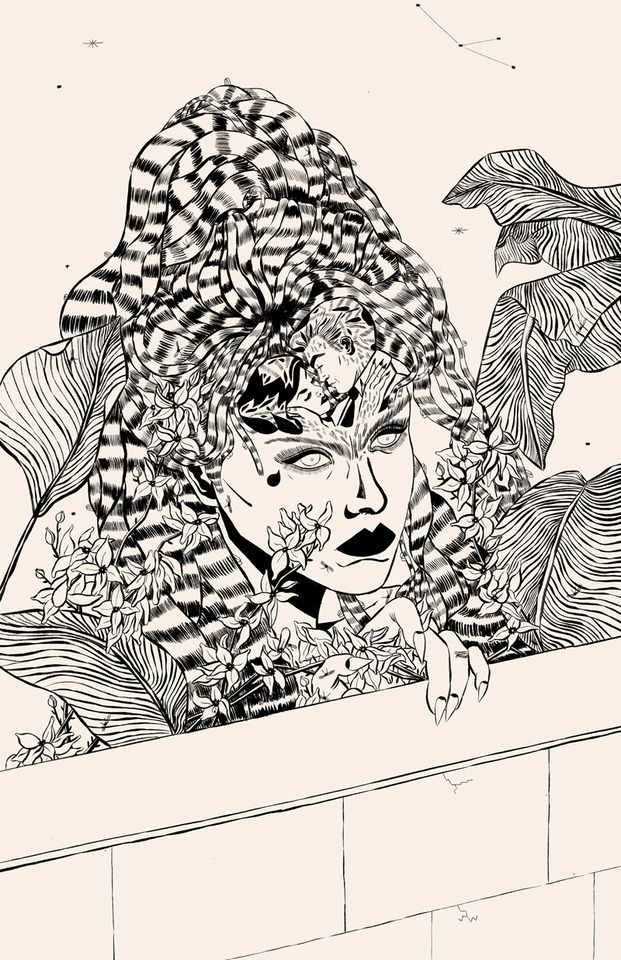
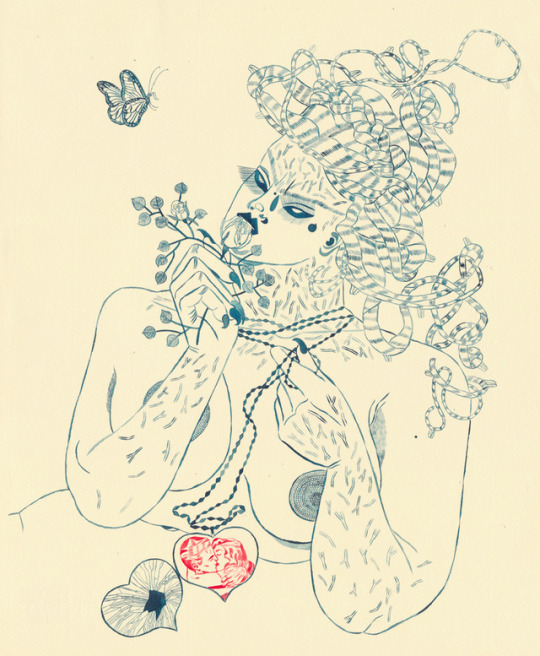
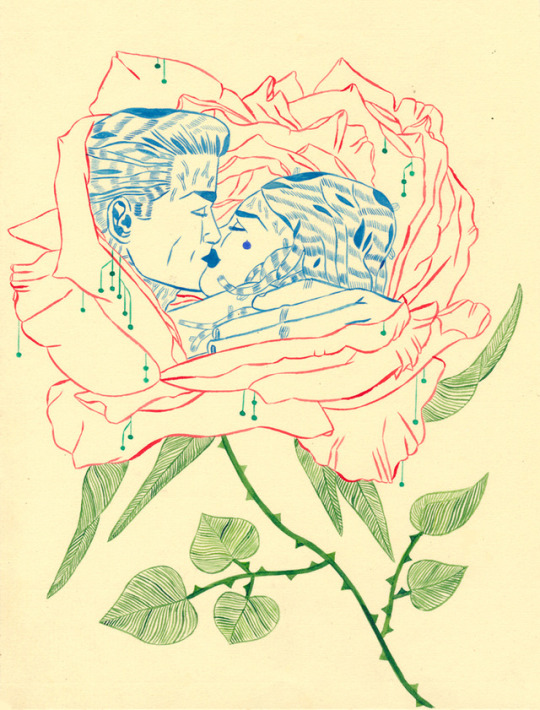
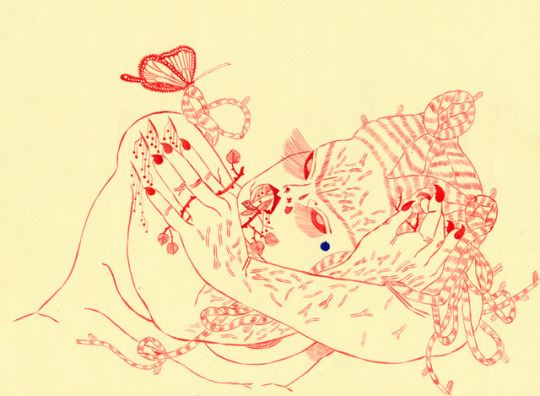
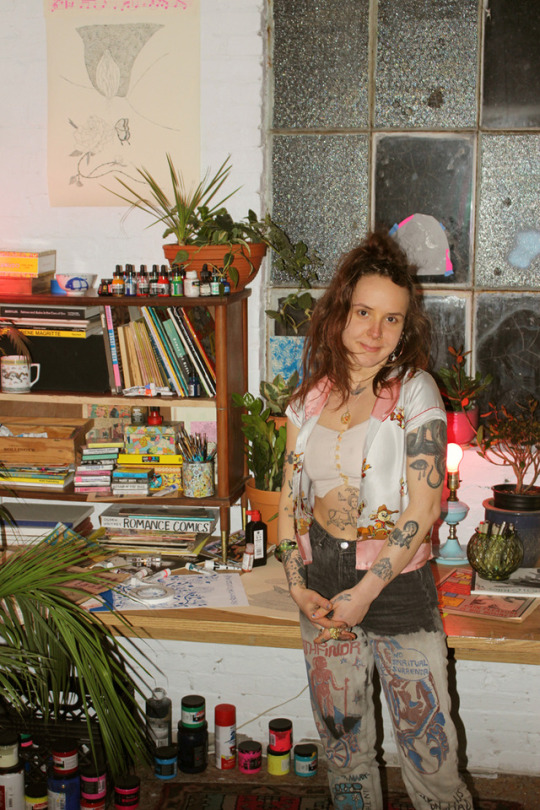

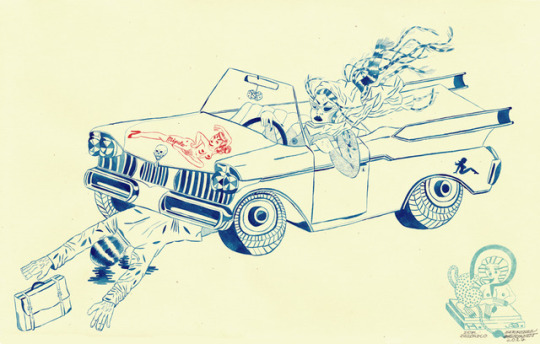
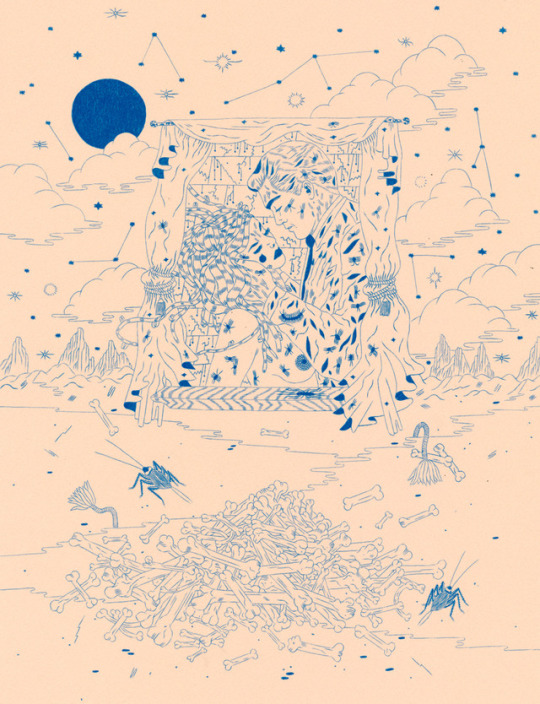
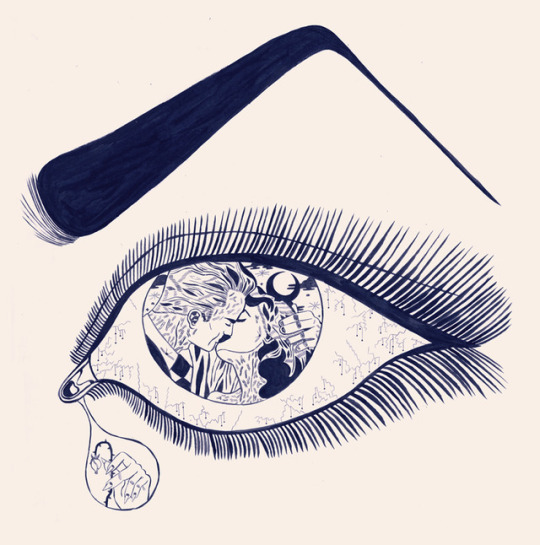

SKETCHY BEHAVIORS | Heather Benjamin (RH)
Through her dense and detailed packed line drawings to her more focused ink brush pieces, Rhode Island based artist Heather Benjamin’s work is visceral, cathartic, and autobiographical. It offers a completely unapologetic and unflinching look into an artists’ own struggles with life, body image, self confidence, and sexuality. We find her and her art to be inspirational, honest and badass.
We recently ran into Heather at her booth at the LA Art Book Fair and caught up with her a few months later to ask about her art, her experiences at RISD, her influences, and her thoughts about her work and her life.
Photographs courtesy of the artist.
Introduce yourself.
My name is Heather Benjamin, and I’ve been living in Providence, Rhode Island for the last few years.
Tell us a little about your drawing background? When did you first find yourself doodling?
It sounds corny, but I don’t remember a time when drawing wasn’t the thing I loved doing the most. I was like that as a little kid, as early as I can remember. I don’t have any concrete memories of being intentionally exposed to a lot of artwork as a child, but I definitely had a lot of visual stimuli from really early on - my dad papered my crib and the ceiling above it with M.C. Escher drawings and pages from Magic Eye books and similarly intense geometric patterns printed out from his computer, I think he read that it was good for babies to be looking at complicated visual stuff like that while your sight develops - and I feel really lucky to say that my parents were always really nurturing and encouraging of my interest in making artwork. They are both musicians, so even though neither of them had a background in visual arts, they were of a similar mindset and psyched that that’s what I was into.
What were your early drawings as a kid revolve around? When did you start to discover zines and printed matter?
The first artwork I got really, really obsessive about was Sailor Moon and Revolutionary Girl Utena, the original manga versions, when I was in fourth or fifth grade. I started drawing tons of fan art inspired by both of those, and from there eventually started developing my own imagery. I didn’t know about zines or weirdo/art comics until I was in high school, when my friends started to have cars, which made us all more mobile, and I was able to start going to punk shows and hanging out at DIY spaces and learning about places like art book stores and infoshops. I just didn’t know those things existed before that. The first zines I saw were all kind of anarchist zines, written about things like how to make your own tinctures and kombucha, telling stories about hitchhiking, or how to build your own screen printing setup.
So your first exposure to zines were mainly political or DIY style zines.
That was really my first exposure to seeing the book format/self-publishing being used as a way to disseminate information easily and cheaply, and I was really psyched on that. Then, when I went to Printed Matter for the first time - an art teacher recommended to me that I should check it out - I think I was around 16, was when I learned that people used self-publishing and the book format not just to spread anarchist or punk rock literature, but to bind together little books of drawings or prints or comics. And that’s around the same time I started finding out about the Fort Thunder scene of the 90s in Providence, and all the amazing zines and booklets and comics that came out of that, and came before that. All those things tied together were super influential and made me want to start making little books and zines of my own work.
When did you first find yourself making a zines and/or being deciding to self publish?
I made my first zines, the first two issues of Sad People Sex, when I was 18, as a freshman at RISD. I had interned at Printed Matter during my year off between high school and RISD, which was when I really was delving into the world of zines and self-publishing and art books for the first time, and I’d been wanting to release a zine of my own but just hadn’t made it happen yet. The first two issues of that zine were folded pieces of 8.5 x 11 white printer paper with photocopied black line drawings of people having sex and crying, that was my concept. No backgrounds or embellishment, just hairy people having sex and wearing socks and crying.
How did the idea for Sad People Sex become a zine?
I was going through a breakup, was feeling very teenage and depressed, and horny, but wasn’t getting any. I was wrestling having uncomfortably strong angry feelings towards my friends who were in relationships, just because they were in relationships, and then consistently getting into extremely masochistic and unhealthy situations with men myself. I was getting cynical about relationships and sexuality but simultaneously feeling hurt and wanting intimacy. So the drawings were basically me wrestling with those opposing feelings for the first time. As that series continued - I made ten issues from 2008 until I think 2012 - it stayed loosely around those ideas, but the drawings and treatment changed with the stages of my life and relationships I was going through. Towards the end of the Sad Sex series I had started making some other zines too that weren’t under that title, and when I decided to stop that series at the tenth issue, I kept going with other self-publishing projects, and I still do.
When did you decide that you wanted to attend an art school or even consider the idea?
In high school, I was constantly going back and forth between whether I wanted to go to a straight up art school, or go to a liberal arts college and major in English. I’ve always really enjoyed writing, and for a long time was super interested in Linguistics, I really thought that might be my, I don’t know, career path. I was confused enough that I took a year off after high school instead of going right to college, which honestly I think everyone should do. I didn’t feel like I figured too much out during that year as far as college and career paths, actually most of it was just spent really dicking around a lot and doing all kinds of bad kid stuff that I couldn’t pull off in high school, haha,
When did you decide to apply to RISD? And what was that experience like?
I guess I was “figuring out” some other stuff - but during that year I applied to colleges again, and decided to apply to RISD. I hadn’t applied there when I was a senior because I thought it seemed too straight-laced, I felt like, if I was going to go to art school then I didn’t love the idea of having to choose a major and stick to it, I wanted to be able to be more interdisciplinary than that seemed like it would allow me to be. But I opened up to the idea and applied and decided to go, half because everyone said it was “the best”, half because I had a super romanticized idea of Providence after being so influenced by and enamored with so much of the artwork that’s come out of Providence, some of my favorite artists ever. So I wanted to be a part of it and be around it. I had a weird rollercoaster of a time at RISD - my freshman year, I still don’t think I was ready to be in college.
What did you find that was super difficult for you at the time?
If I could go back and do it again, I probably would have taken another year off before starting school. I was really depressed and having a terrible time, in my personal life and in school. I wanted to drop out after that year, but I gave it another shot and stayed for my sophomore year. By the end of that year I was really miserable, in so many ways, so I left. I ended up moving to Brooklyn and stayed there for a little over four years, and basically spent all my time on my artwork, aside from working tons of random Craigslist odd-jobs to pay my rent - doing flower arrangements, figure modeling, catering, all across the board.
But you ended up returning, and finishing? And how was that experience different from your previous one?
I really didn’t think I would go back to school, especially back to RISD, but I guess you can never predict what’s going to happen in your life and how your mindset might change, cause by 2014, I was feeling stagnant in my work, and kind of wishing I could have what I by that point viewed as the luxury of being able to choose from tons of amazing classes, work with incredible and influential teachers, have group critiques, all the things I took for granted a lot of the time when I was in school before just started to seem like they would be really good for me. I guess basically it just felt like I was finally ready for school, because I felt this really strong desire to learn, in the specific format that being in school offers you. So I went back, which is one of the reasons I moved back up here a few years ago.
Were there other reasons as well?
The other reason was I didn’t totally want to be in Brooklyn anymore, I needed more space - physical and mental - and, this was a big reason, I couldn’t afford to live there anymore without having to work so many hours at a day job that I wasn’t able to work on my drawings as much as I wanted to, and that seemed like a huge waste, to not have a real workspace, barely be able to afford my room, and spend most of my time waiting tables, which I am truly terrible at, to pay for that tiny room. But in any case, I moved back up here and finished undergrad, and it was a funny experience because I was older than everyone in my classes and all my friends were gone, kind of felt like a ghost town to me in a weird way, but it was an amazing experience.
What do you think was the difference for you at RISD after a few years break?
Being in school when you actually really want to be there, and are soaking all the information and feedback up and just feeling inspired and challenged, feels so good. I’ve literally never had that feeling before; I think up until that point any time I’d ever been in school I just hated it. I even felt like, at the end of my most recent two years there, that I didn’t want it to stop! I was ready to keep going. It made me start thinking about grad school, another thing I never would have imagined I’d ever consider.
Who have been some of your early and persistent artistic influences?
In my year between high school and starting at RISD, I got totally obsessed with all the artwork that came out of the Fort Thunder scene in Providence in the 90s/2000s. And as a result of learning about some of those artists - Brian Chippendale, C.F., Mat Brinkman - I learned about and became interested in other artists who worked with them or were influenced by them, like the Paper Rad collective, as well as other artists involved in making weird art comics as a whole, like Gary Panter. Basically, finding out about the Fort Thunder scene, and subsequently doing research into the artists who grew tangentially out of that as well as those who influenced the people involved in it, opened up an entire world of influence for me - it was around the same time that I found out about and became obsessed with Raymond Pettibon, especially his older zines.
Oh the good stuff!
I found out about the now-defunct publishing house PictureBox when I realized that a lot of the formally released book projects from the Fort Thunder affiliated artists who I loved had been released by the same publisher, so I decided to look into the other artists that PictureBox had produced books or prints for, and found out about even more artists who ended up being influential to me just by looking through that catalog, like Frank Santoro, Julie Doucet, Charles Burns, King Terry. And at the same time, I was dipping further back into weird comics/art history and learning about R. Crumb, Aline Kominsky-Crumb, Wimmen’s Comix, and really the Last Gasp catalog as a whole.
How did all this research into the underground comics and artists of PictureBox influence you at RISD?
All these artists played a huge part in me beginning to make my own content in my late teens, when I was starting at RISD, and made me think about my linework and my content, as well as format and self-publishing, in different and super influential ways. I definitely would not be making the kind of things I make right now if I hadn’t followed this trajectory of finding out about all the artists and kind of work I just mentioned.
When did you start mainly working w/ pen and paper?
I’ve always been a compulsive doodler, I got in trouble for it in school and had issues studying for tests, because when I’d open up my binders, my notes from class were just completely covered in whatever I had been absent mindedly drawing. So I’ve always been really comfortable using pen and paper, I just gave myself so much inadvertent practice for years.
When did you go from compulsive doodler to kind of the work you do now?
I didn’t ever take that seriously as a medium until I was in college, though. I made my first zine, Sad People Sex, when I was a freshman at RISD, I was 18. I drew it with Micron pens on printer paper and photocopied it. I think the main reason I used pen to do it was not just because I was comfortable with it, but because I knew it would photocopy well, which was important. The original drawings didn’t even really mean anything to me, it was all about how the zine would look once the images were reproduced. I’ve had that mindset for a long time now, making things only with the intention of them being reproduced in some way, and have only recently started to try to open up a little more out of that, and make some work that’s meant to exist only in it’s original form, not made to be reproduced to the point where the original is almost inconsequential.
Why were pens your favorite medium, you think?
For years I was so into using tiny pens for everything, because I loved getting hyper detailed in my work. I still do, but in the last few years I’ve been moving away from using pens, and have instead been trying to teach myself to get the same level of detail using a brush and ink instead. I’ve always loved painting and have been trying to move more in that direction - for so long, I worked in a pretty traditional “cartoonist” style, pencilling things out on bristol board and then inking them with pens, then going back in and erasing the pencil. I got really tired of that - it really is only good for something that’s going to be reproduced in some way, printed or scanned, because the originals end up getting really smudgy, the erasers pick up so much of the ink as you go back over it - it has it’s own charm, it’s it’s own thing, but not what I’m doing now.
Interesting, so you moved away from the hyper detailed drawings?
More recently, over the last year, I have been really enjoying challenging myself by not only moving into just using brush and ink instead of a pen, but also not pencilling anything, so eliminating the steps of doing a lot of planning things out in pencil and then a lot of erasing after the inking is done. I guess it’s more of a painterly thing - I’ll make a really quick pencil “study” in my sketchbook, just a vague outline of what I want to make, and then go straight to a larger sheet of nice paper, directly with brush and ink.
How do you think this process of brush and ink compares to your “tiny pens”?
It makes me work slower, think more deliberately about each line in the moment, because it’s so unforgiving. And it also somewhat decreased the element of total control in my work, which feels hard for me, but good. If a weird proportion or line happens, then it happens. I can’t just erase it and draw it again until it’s perfect like I used to. I’ve also become so attached to the fluctuations in line weight that happen naturally when using a brush, to the point where the uniform thickness of a 005 or 01 Micron or Prismacolor pen seems boring to me a lot of the time now! That said, I will never totally move away from using pens, they’re great for certain things, and I totally still doodle with them in my sketchbook and on all the scrap paper I have lying around the studio. But I am more all about using brushes these days.
There’s an energy to your work and compositions that exudes an endless and obsessive creative energy. Some of your work is almost entirely covered and packed with details, textures and background. Were you always drawing this way or was it something that developed for you?
This is something that has changed a lot for me over the last five or six years. For a while, I was totally obsessed with making super detailed and dense work, there was almost no open space left on the page ever, and that was how I liked it. Then, I felt like I went through a period where I was upset with that, and I wanted there to be more compositional balance in my work, leave some open areas that felt like they were supposed to be open, but I couldn’t figure out how to do it and just by default would end up filling every inch with linework, then I’d sit back and look at the piece and be so angry with myself for being so stuck in that loop. I guess to some extent I’m still struggling with that!
It’s pretty amazing how much you packed in your pieces. Why do you think you were making such such detailed drawings and compositions?
These days, I don’t enjoy having quite as dense of compositions as I used to, but I do still love detail. I guess I’m still working it out. But I can say, during the time when my work was the most dense - like the middle of the Sad Sex zine series, around issues 6/7/8 where every single inch is just covered in linework - that was a period of time where I was doing so badly mentally, felt completely manic, was taking tons of adderall, and spent all my time alone in my room drawing. I would sit at my desk for 14 or 15 hours a lot of the time, only taking breaks to go to the bathroom, chainsmoking at my desk and working on those drawings.
In retrospect I can see the density and manic quality to those drawings as a reflection of my mental state at the time. I gave myself carpal tunnel from how long I used to sit and just work without any breaks at all. I lost tons of weight, wasn’t eating, just coffee and cigarettes and adderall. It was so bad! I have a completely addictive personality and that was the worst it has ever been. My process now is totally different - I will still work for hours, but not 14. Usually the most time I’ll spend consecutively in studio is 8 or 9 hours. And I don’t take adderall anymore, haha. That was.. not good. I went through kind of an enormous lifestyle upheaval after that period of time, like four years ago, and my style of working changed along with it, since the two are so tied together for me.
How has your process changed now for the better?
My process now is basically that I’ll make vague little pencil sketches in my notebooks for ideas for pieces, and then once I get into studio, I’ll cut a big piece of paper - I’ve been just using this one kind of paper lately, a nice off-white shade of Ingres - and just go straight at it with brush and ink. I love, love, love this way of working. It feels super meditative and precise and slow and fulfilling. I end up with way less finished pieces that I like, because they’re so unforgiving, and I work much more slowly than I used to because of how much more time I’m spending figuring out my next move, but I like it so much better this way. Even though I’m working slower, though, I still can’t sit with an unfinished piece for more than about a week. If something’s hanging on my wall unfinished for more than like, six or seven days, I definitely lose interest in it. It’s hard for me to go back into things that aren’t at least somewhat fresh.
You make some powerful images and fairly graphic ones too, involving pleasure and pain, the body, and/or involving predominantly a female character who is not to be messed up. Your process and art has an intimate and very personal aspect – how autobiographical is it?
My work is very, very autobiographical. I love when people relate to my work, there’s basically nothing more fulfilling than someone having a very visceral and personal reaction to something that I drew. But the reason for that is because when those connections happen, they make me feel less isolated! My work is so diaristic, everything I draw is coming from something I’m personally feeling or thinking, I’m not trying to speak for anyone else. Even though I think sometimes this ends up happening, I’m never really intentionally trying to make work that speaks to women’s experiences a whole. I just think that’s too lofty and assumptive of a goal. I’m expressing my own experience, and when it does align with other peoples’ and they tell me that, it feels amazing, that’s huge for me. But it is all totally autobiographical.
What type of personal issues do you find you are addressing in your work?
I’ve always had a very complicated relationship with my self confidence, my perception of myself, my body image. Almost my whole life I’ve felt like I just bounce between the two extremes of feeling totally confident and proud and beautiful, sometimes to a point where I worry that it’s egomaniacal, and then feeling like total fucking shit, so disgusting, hating my body and my mind. Obsessive compulsive, body dysmorphic, manic and embarrassed or livid and insane. Then add a heaping dose of the yin/yang thing that happens where, in the realm of seeing myself as a sexual being, I’m ricocheting between shame and trauma, and joyous or animalistic raw sexuality - actually, not usually ricocheting, it’s kind of just always both at the same time. It’s super confusing, it’s overwhelming, and I constantly feel bogged down by it all. I don’t feel like I”m good at putting this into words - one of the reasons why I make work about it. It’s a better way for me to articulate how I feel, the bouncing back and forth between extremes or the coexistence of all those opposing feelings at the same time.
Sounds like making art and the process of making art helped you immensely?
And the process of making work about those feelings is cathartic to me - aside from things like, doing breathing exercises or yoga, it’s basically the only thing that centers me. Because the giant swirling mess of all those mixed up and messed up feelings is always roaring in my head and causing all kinds of unintended and stressful consequences, and I can never completely make sense of it. But being able to take a big handful of those feelings, translate them into some symbols and imagery that make sense to me, and turn it into a picture that, even if it contains graphic or lewd or unsightly content, is hopefully, when you step back and look at it, a beautiful picture, that’s my way of making sense of it. Maybe it’s hard for me to really take a step back in my life and in my mind and tame all the beasts, but if I can articulate it all into pictures and physically take a step back and see it all at once forming a narrative that way, and creating something pleasurable out of all the crazy or shitty or confusing pieces, even if it’s just aesthetic valueand feel other people relate to it too, that helps me.
You mentioned that you often keep a sketchbook. Some artists keep sketchbooks and some don’t. What about it do you find helpful?
I keep a sketchbook, which I think is really important for me. I just jot down ideas in there when they hit me, or write down things I want to check out later, whatever I just need to make a note of. And do quick little super vague drawings of things that maybe would end up in a finished piece.
When I go into the studio, I either know what I want to work on - in which case I work from the quick pencil drawings or studies that I have, and just go straight to brush and ink on paper using them for reference - or if I’m not sure where I’m going yet, I’ll look through my sketchbook to try to piece together a few ideas, or look at some of my books, or at stuff on the internet for some inspiration for a jumping off point.
Where do you find inspiration if you’re feeling “uninspired”?
I try not to look at the internet too much for content or inspiration, but when I do, I usually look at one of a few blogs that I follow on blogspot where people post Pre-Raphaelite paintings and drawings, or a couple that I follow who are like, old dudes in the midwest that collect weird old printed ephemera and photographs of belly dancers and porno magazines that they scan and share. But if I’m working from reference, I really prefer working from printed materials that I have on hand. I collect a lot of old magazines, like old playboys or gardening catalogs and romance comics that I find at flea markets and antiques malls. Usually if I’m feeling a block, I’ll pick up one of those and use it as a jump off to start doodling, then close it and keep going with the drawing myself. That usually helps! If it doesn’t, and I’m having one of those days where everything just looks like shit, I try not to beat myself up too much, and go expend the creative energy elsewhere, like sewing or cooking, so I don’t end up feeling completely pent up. I definitely have a complex, or something, where I am super self-critical if I’m not productive every single day. I get really mad at myself if it “just isn’t working” in the studio, so the least I can do is try to spend that energy on another project, even if it isn’t art related, just so I don’t lose my mind.
I recently ran into you at the LA Zine art book fair. How was that event for you? What do you love about a zine fest? Anything you picked up you’d recommend?
LAABF was amazing! I’ve never been to LA before, so that was huge. So many people I know have been moving there over the last few years, and I didn’t really get why, since I hadn’t been there. All it took was going there for a week to get it, haha. I really get it now, I loved it there. Aside from being psyched on being there, the book fair itself was awesome. I’ve been tabling at the NY art book fair, which is basically the exact same event but at P.S. 1 in New York, every year since 2010, but I could never make it out to the LA fair. I was always either too broke, or in school. Or both. But I could finally swing it this year, and I’m so glad I did. There were a lot of the same exhibitors as there are in New York, and there were a ton of new ones too, people who don’t make it out to the New York one, so that was great. And even with the people who table at the NY fair as well, everyone always puts out new publications and editions to debut at the fair, so it’s just an amazing environment of everyone showing each other all their new work, tons of creative energy and enthusiasm. I’ve tabled at a lot of zine and comics fairs, but the Printed Matter book fairs are always the most exciting, by far.
Could you describe your current surroundings and/or studio? Do you have a favorite object in that collection?
I just moved into a new studio in the last month and I’m so psyched on it. It’s by far the nicest, and biggest, workspace I’ve had. It’s a little standalone building, actually a converted garage for the house I live in, that’s in my backyard. It’s got a bunch of big windows and a woodburning stove, it feels very New England which I love, ha! I’m still setting it up, but I’m in love with it. My last two studios were much smaller, and even though the rooms themselves were private, they were in buildings that were shared with a ton of people, so it was always noisy. Especially my last studio, which was in a warehouse building where a lot of bands in town have practice spaces. I think I was the only person renting space in there that wasn’t a band or someone using really loud machinery. I never really got completely used to that, so having this completely isolated, private, quiet space feels so luxurious now. I’m so into it. My favorite thing in here is probably my collection of old romance comics. I’ve loved the aesthetic of these for years now, but only started sort of collecting them in the last year or two. I don’t buy them online or anything, I just wait to come across them at flea markets or antiques malls, so the collection is growing slowly, but I kind of like it better that way. I know I could find a bunch of amazing issues pretty easily on the internet, but I like collecting the ones that just make their way to me. I use them a lot for reference for my drawings, but also just love reading them and having them around.
What are your top 5 artists at the moment?
Paul Delvaux, Leonor Fini, Rossetti, Pettibon, Virgil Finlay
Favorite Vans?
Definitely my first pair ever which were the red and white checkered slip ons. I finally convinced my mom to let me get them in seventh grade. I wanted them so bad, I think she just thought they were too crazy, but she finally gave in. And I got them just in time to wear them to Warped Tour in Asbury Park. I can’t remember what year that would have been.. maybe 2000? or 2001? All I know is I was wearing my red and white checkered vans and tons of rubber bracelets and watching Rancid play for the first time and in that moment I could have died happy.
In a parallel dimension, what would you be doing (job wise) if you weren’t an artist?
Probably teaching! Which is still something I hope to do, I’d like to be an art teacher to little kids, I’ve done a little volunteer work in that area. We’ll see how that goes, I might have already put the nail in the coffin of that dream when I started posting drawings of swollen bleeding vaginas on the internet. But maybe I’d be teaching something else, like English or Feminist Literature or Linguistics.
Ask and answer a question you never get asked.
(I am totally stumped on this one but will let you know if i come up with something, hopefully I will!!)
What’s the best advice you’d give someone struggling with his or her art?
Keep a sketchbook and draw something in it every day even if you hate how it comes out. Look at tons of other peoples’ art, new and old. And not just on the internet; buy art books. Ones that have writing in them, about the artists’ process, essays, and read them. Buy them used, it’s cheap! Soak up tons of information, think about it and react to it. And be hard on yourself, but don’t be unhealthy about it. You have to take care of yourself. Now I just feel like I’m talking to myself here, haha!
What do you have coming up for 2017?
I’m doing a residency in Brooklyn for the month of September, and tabling at the NY art book fair this Fall. I have a few group shows lined up through the end of the year, too. Aside from that, I’m really focused on trying to make a new body of work, and larger paintings, and hopefully find somewhere to show them early next year!
Follow Heather
Website: baby-fat.net
Website Store heatherbenjamin.bigcartel.commy
Instagram @heatherbenjamin_
766 notes
·
View notes